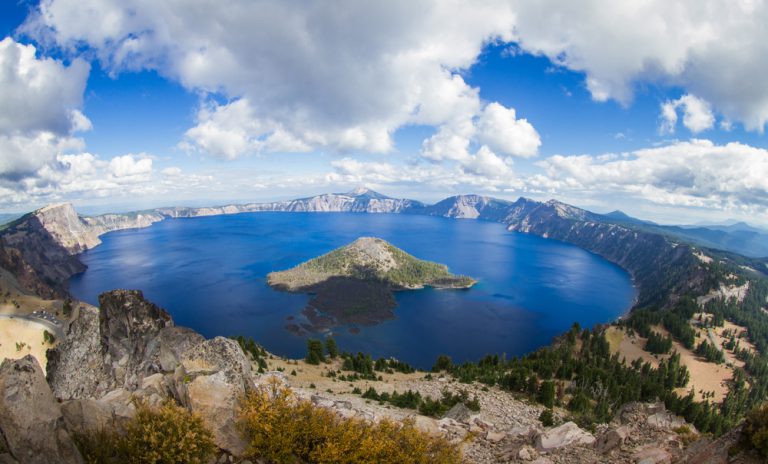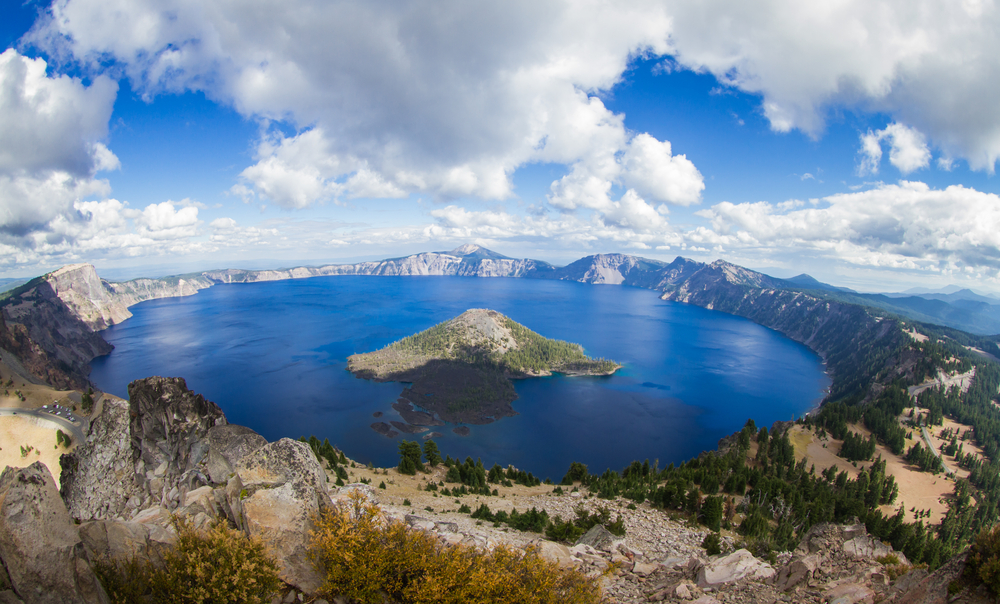
Crater Lake National Park is a place of extremes: this, the deepest lake in the United States (and one of the deepest the world over) was created through a decidedly destructive force — the eruption of an ancient volcano called Mount Mazama. Out of that violence, this pristine and breathtaking well was created, measuring 1,949 feet deep and boasting some of the most profound Technicolor waters you’ll ever see.
As incredible as it is to get to experience this lake as a contemporary camper or hiker, the land has a history far longer than our own — and indeed, the Native Americans who inhabited this landscape long before white settlement and colonization actually witnessed the transformation of that eruption almost 8,000 years ago.
Here is the fascinating Indigenous history of Crater Lake National Park, a land of unfathomable transformation and change.
The Indigenous History of Crater Lake National Park

The land on which present-day Crater Lake National Park sits is the ancient ancestral grounds of the Klamath people, who, evidence shows, lived here on that fateful day about 7,700 years ago when the volcano blew up. Obsidian tools, spears, moccasins and other artifacts have been found in the layer of ash that tells scientists when the eruption occurred, which means that these people were physically present to witness that moment of creative destruction.
Additionally, Mount Mazama and its explosive force feature in longstanding Klamath legends, a history passed down through a tradition of oral narration. In one of these legends, a war rages between Mount Mazama and Mount Shasta, a stratovolcano located in northern California that may still be active. Llao, the spirit of the underworld, was said to live beneath the portal of Mount Mazama, then known as Lao-Yaina. Llao fell in love one day with a beautiful daughter of a Klamath chief, Loha — but was rejected. His anger mounted, and he swore he’d destroy the people with fire… but it was actually in the ensuing battle with Skell, the spirit of heaven who lived in the sky above Mount Shasta, that caused the eruption, which vanquished Llao. Skell then filled in the crater left by this epic fight with a beautiful lake, so that the people would have something lovely to look upon for the rest of their days.
Today, the Klamath people live on in a number of active and federally recognized tribes, including the Klamath, Modoc, and Yahooskin (Yahuskin) Band of Northern Paiute Indians of Oregon as well as the Klamath, Karuk (Karok) and Shasta (Chasta) people of California. The Klamath people enjoyed complex social structures and were in many ways progressive — for example, divorce was common and easy among Klamath couples, and brides were allowed to leave their husbands without extreme effort or consequences.
Paying Respect to the Land
Even if you happened upon Crater Lake without any context whatsoever, it would be easy to tell you were in the presence of something amazing; as far as natural beauty, power, and majesty, this place speaks for itself.
But coming to a fuller understanding of the complex human history of this place — and the tragic violence that has shaped it — is an important step toward participating in the ongoing legacy of Crater Lake in an intentional and well-informed way. These lands have been lived on, loved, and cared for by ancient peoples for centuries, and as visitors to their land, we owe it to them to be good caretakers ourselves. That means doing what we can to leave it as we found it, and even make it better for the people who will come after us. Leave No Trace has some excellent practices to uphold that make the project of ongoing stewardship as easy as following a few rules.
Finally, we want to thank you for reading a little bit about the Indigenous history of this place, and to encourage you to check in with resources like Native Land to get a sense of whose land you’re standing on wherever you are in the United States (and further afield). The National Park Service has more information about the cultural and human histories of all its properties, so feel free to ask a park ranger for more information during your visit.

